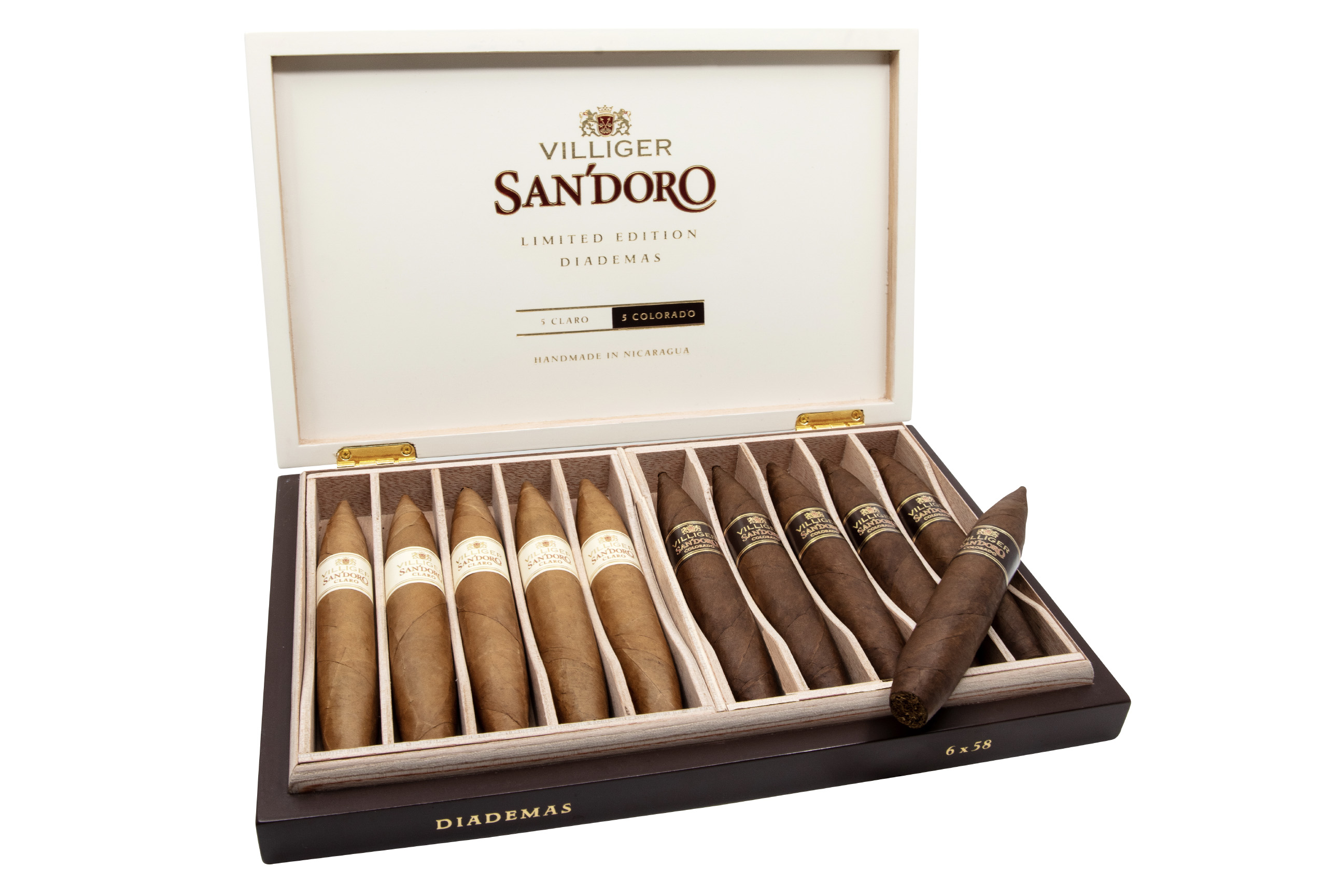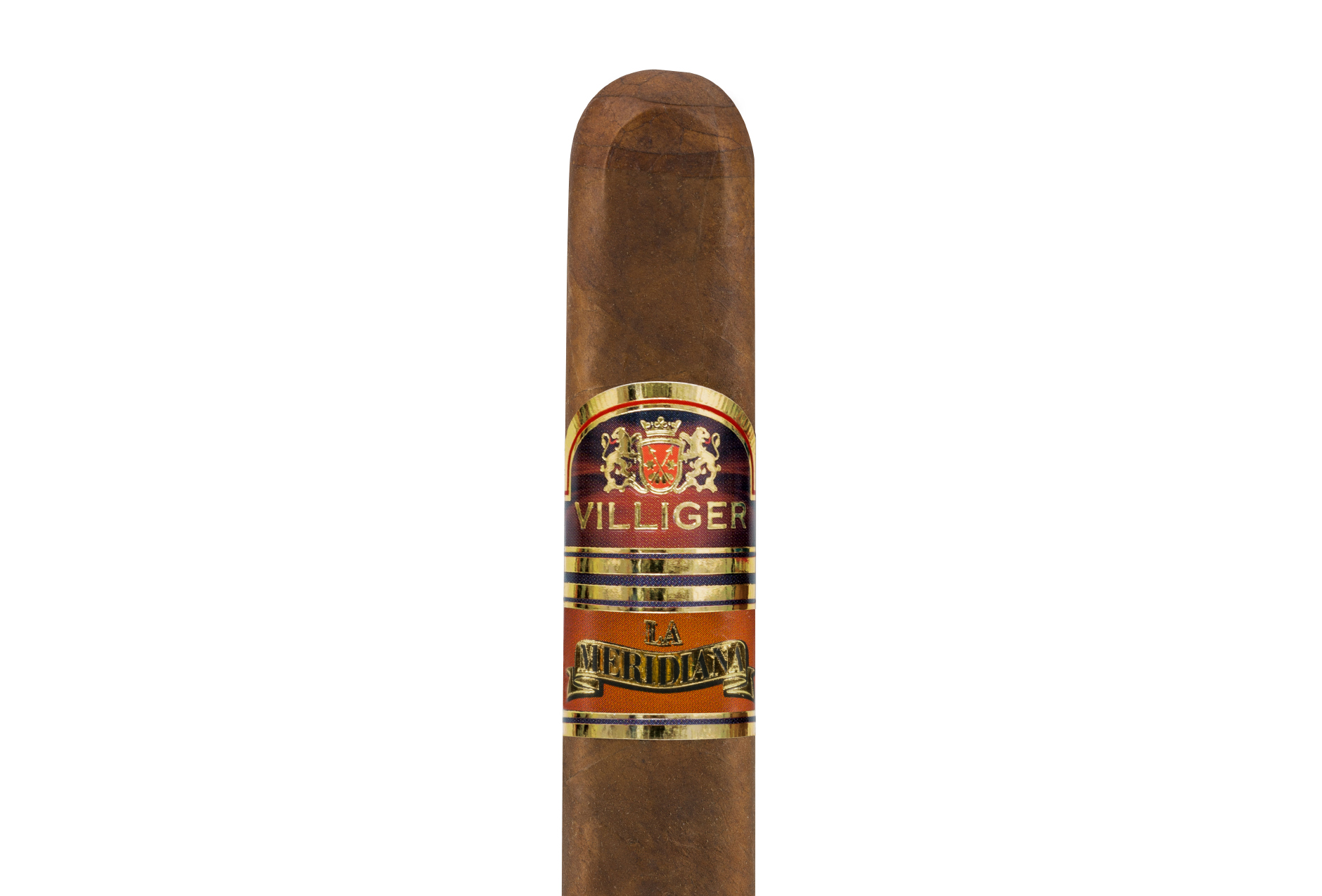On March 16, Villiger Cigars began shipping a new limited edition diademas in two of its already existing lines.
Limited to only 300 boxes, the new release includes five each of the company’s San’Doro Claro and the San’Doro Colorado in a diadema format that measures 6 x 58.
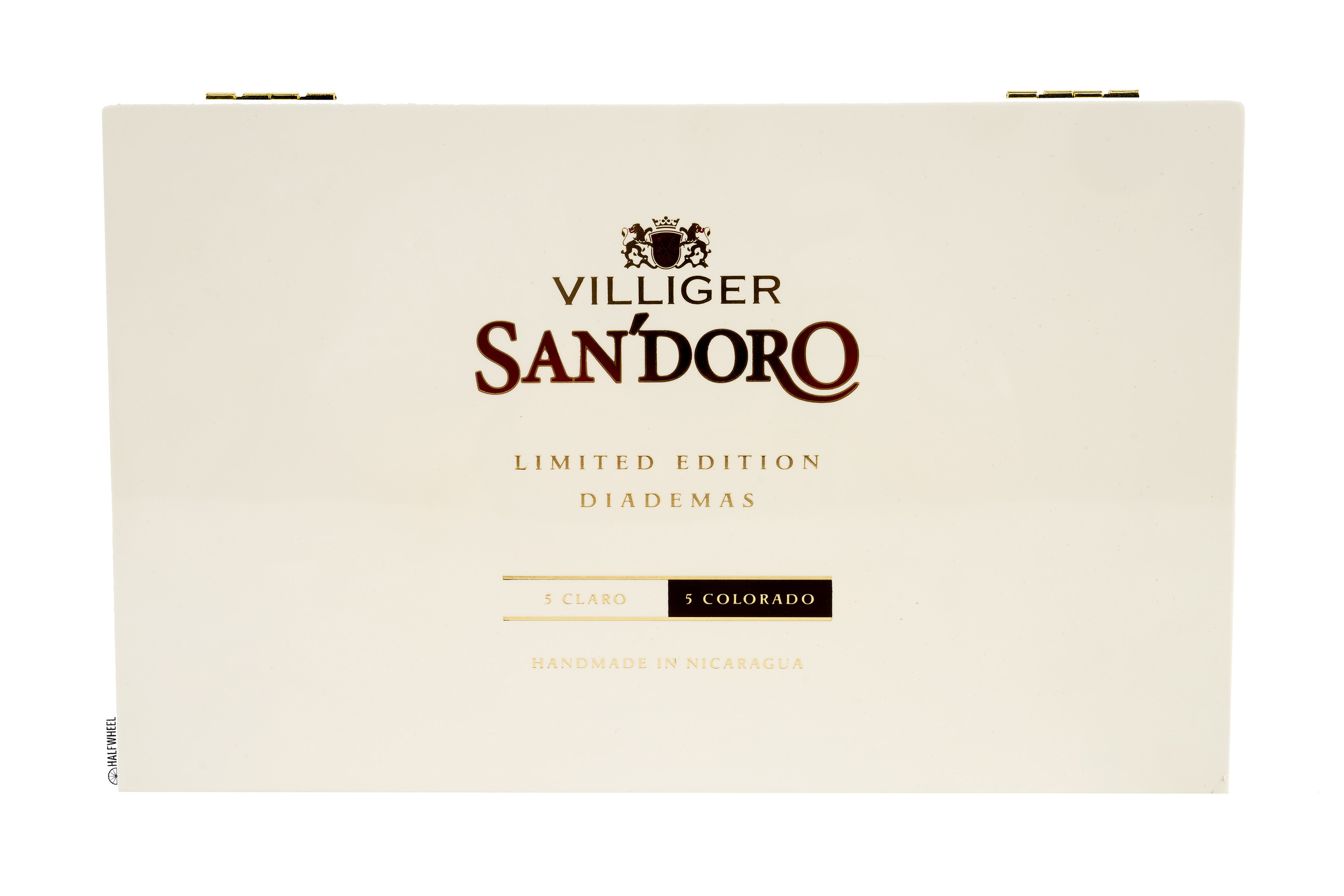
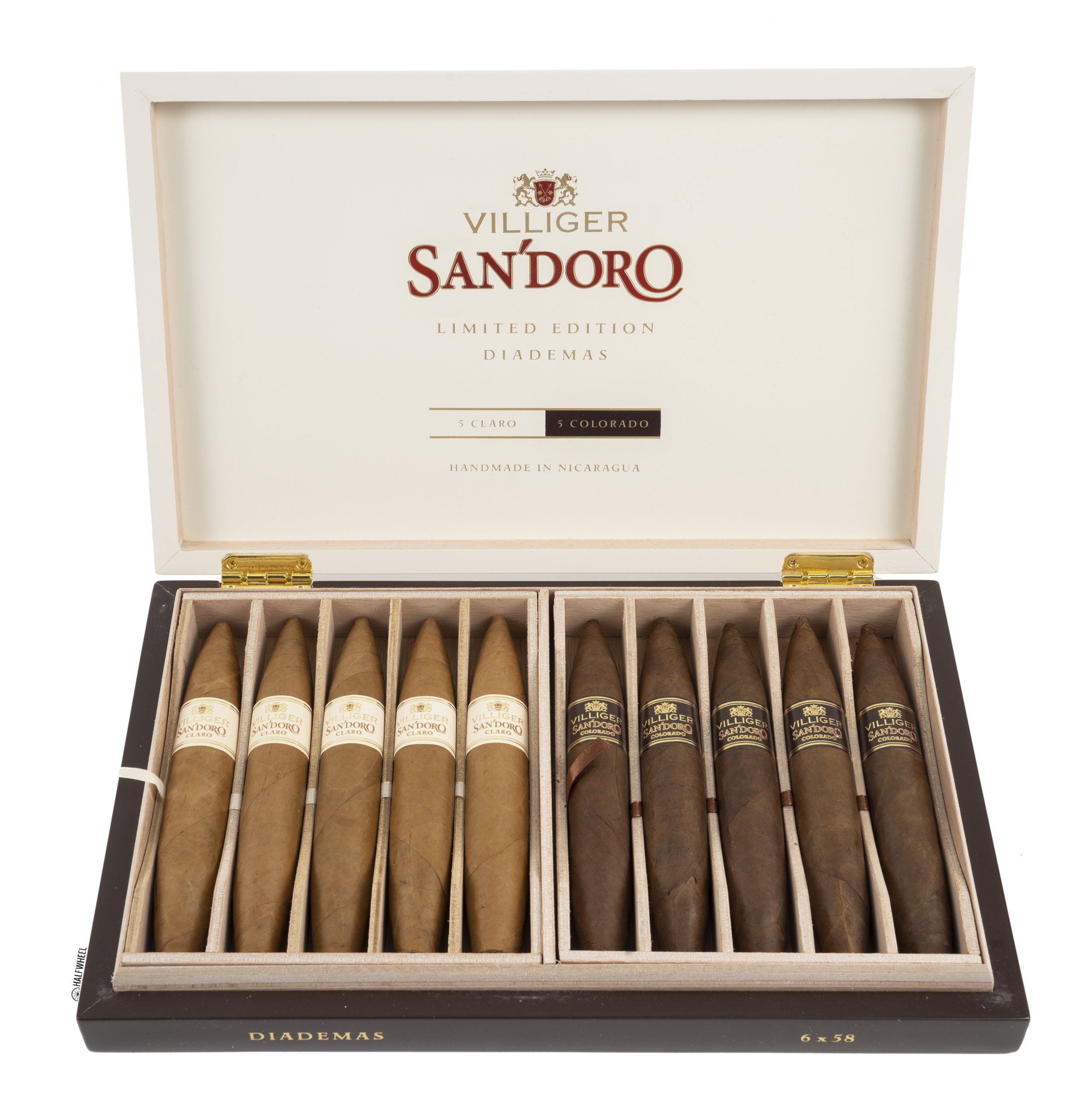
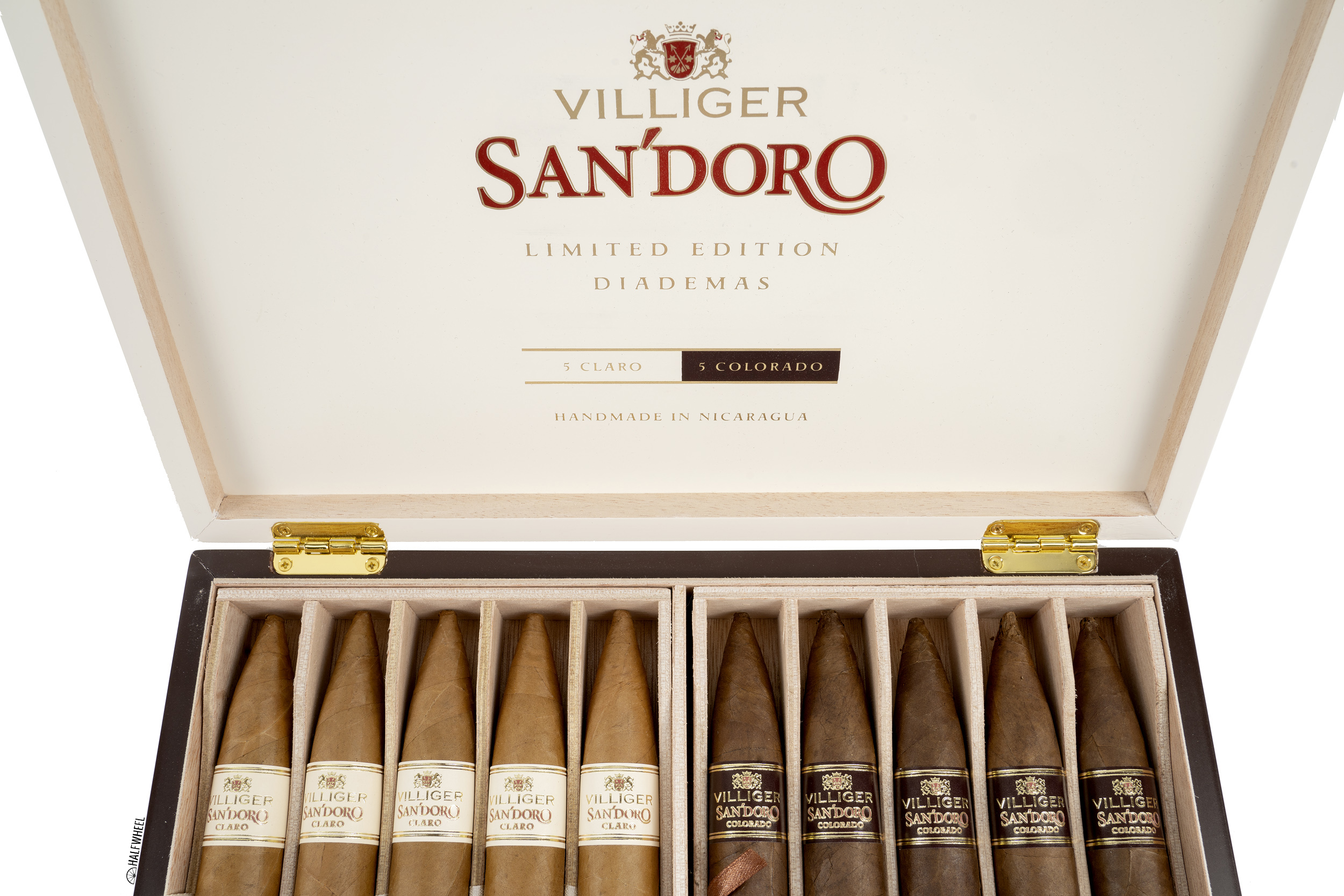
In terms of blends, both cigars incorporate the same Nicaraguan tobacco in the binder and filler, but the Claro cigar is covered in an Ecuadorian Connecticut leaf while the Colorado cigar uses an Ecuadorian habano leaf.
The cigars are priced at $15 per cigar and they were rolled at the at Fabrica de Tabacos Joya de Nicaragua S.A. factory located in Estelí, Nicaragua.
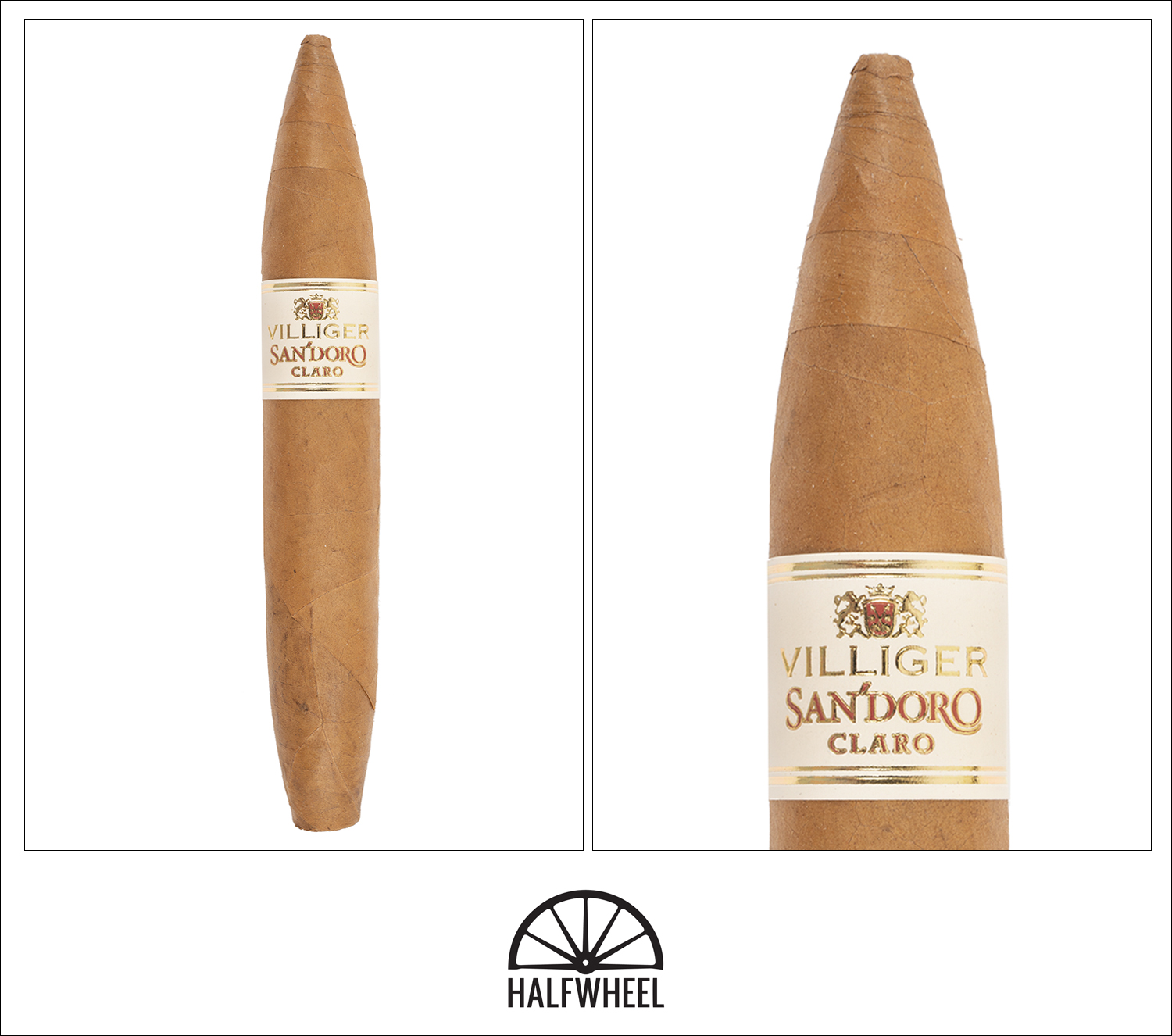
- Cigar Reviewed: Villiger San D'oro Claro Diadema
- Country of Origin: Nicaragua
- Factory: Fabrica de Tabacos Joya de Nicaragua S.A.
- Wrapper: Ecuador (Connecticut)
- Binder: Nicaragua
- Filler: Nicaragua
- Length: 6 Inches
- Ring Gauge: 58
- Vitola: Perfecto
- MSRP: $15 (Box of 10, $150)
- Release Date: March 16, 2020
- Number of Cigars Released: 300 Boxes of 5 Cigars (1,500 Total Cigars)
- Number of Cigars Smoked For Review: 3
Visually, the Villiger San D’oro Diademas Claro hits all the right notes, including a golden brown wrapper with a very slight reddish tint that is both smooth and supple to the touch, despite the almost complete lack of oil. The cigar is quite firm when squeezed and there are a number of very noticeable veins present. Aroma from the wrapper is a combination of sawdust, hay, peanuts, earth, barnyard and bubblegum sweetness, while the cold draw brings flavors of creamy cashews, sweet cedar, leather, roasted coffee beans and a touch of white pepper.
Immediately after lighting the foot of the San D’oro Diademas Claro, my palate is blasted with the flavor of roasted peanuts which remains the dominant note, followed by lesser flavors of chocolate-covered espresso beans, leather, earth, anise, hay and sawdust. There is a noticeable amount of vanilla bean sweetness on the retrohale along with some obvious white pepper, and both seem to be gaining strength has the third burns down. In terms of construction, the draw features excellent resistance after a Dickman cut while the burn is far from razor sharp, it is also nowhere close to needing correction. Strength-wise, the Villiger end the first third basically where it started: firmly between the mild and medium lines.
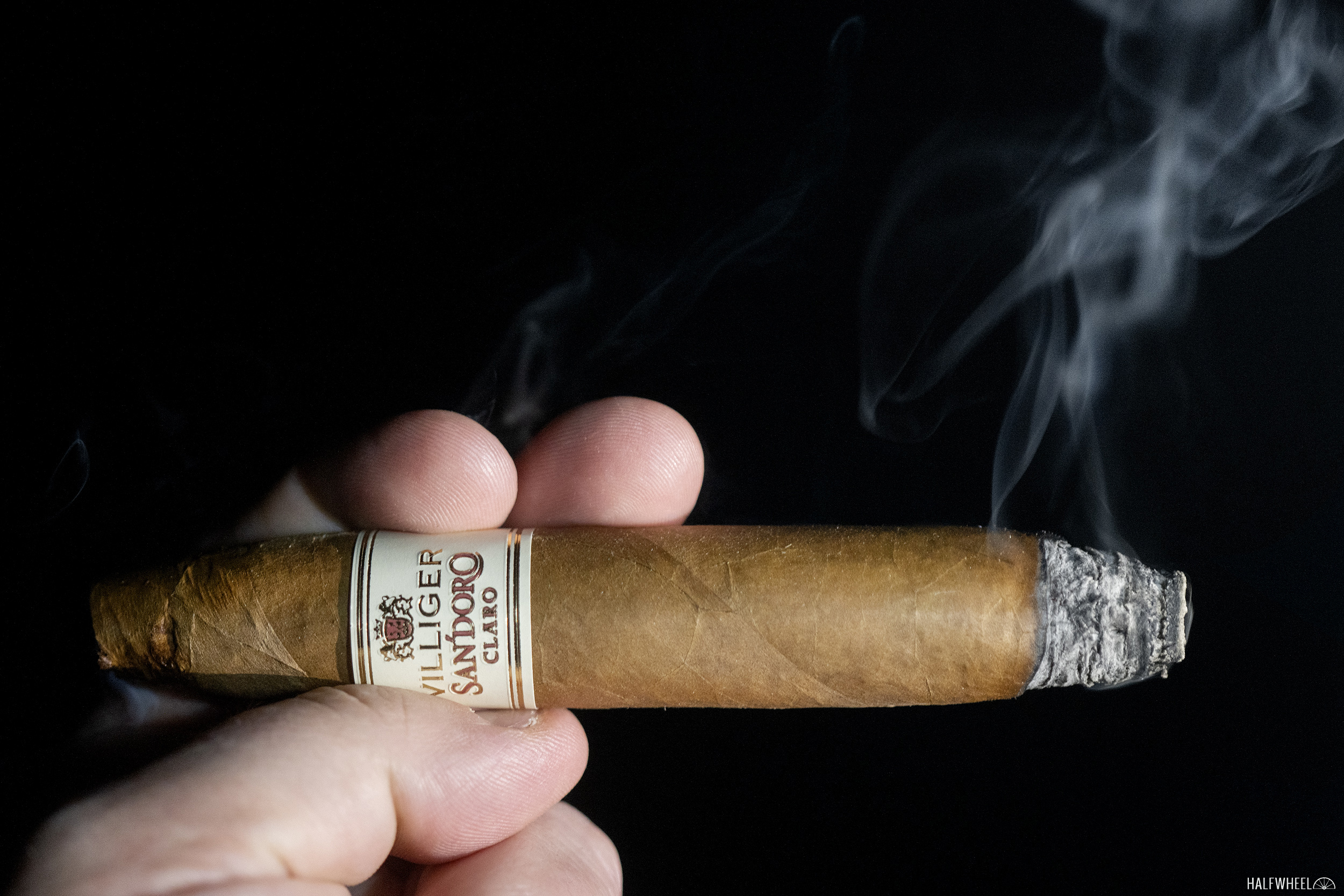
Although the roasted peanuts note retains the dominant spot in the profile during the second third of the Villiger Diademas Claro, there are a number of new flavors including popcorn, aromatic cedar, cream and a touch of lemongrass. Both the vanilla bean sweetness and white pepper from the first third are still very much present and seem to be increasing in strength, but what little spice there was to be had on my lips is long gone by the halfway point. Construction-wise, the draw continues to easily impress me, but the burn has moved off course enough for me to touch it up quickly. Smoke production is both thick and copious off of the foot and although the overall strength has increased a bit, it still fails to reach the medium mark by the time the second third comes to an end. 
Unfortunately, the final third of the Villiger San D’oro drops a number of the flavors that were added in the second third, leading to a much less complex profile overall. While I still taste notes of roasted peanuts, dark chocolate, espresso beans, hay, earth and cedar, none of them could be considered dominant, and all of them are noticeably less distinct. Having said that, both the vanilla bean sweetness and white pepper are still obvious on the retrohale—the vanilla sweetness, in particular, seems to be a bit more aggressive—and that trend continues until the end of the cigar. Thankfully, the burn has evened up nicely—albeit still not razor sharp—and the resistance on the draw continues to deliver stellar results. Finally, the overall strength does increase enough to hit a point extremely close to the medium mark just as I put the nub down with about an inch remaining.
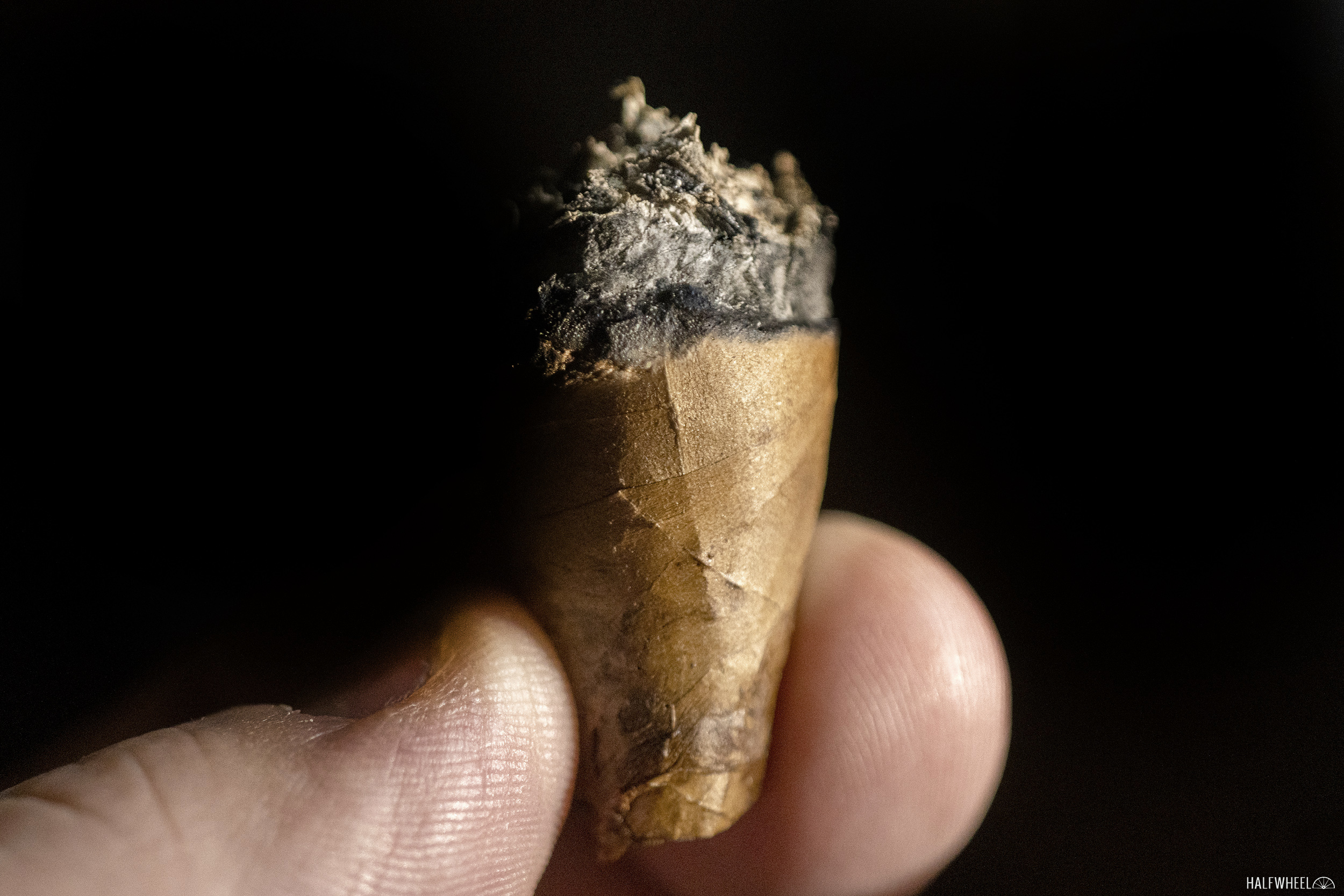
Final Notes
- Despite how Villiger classifies it, I would call this more of a perfecto, as a Diademas vitola usually has a more rounded cap and a more bulbous foot.
- Villiger also sells a maduro version of the San’Doro line, but that cigar is a Brazilian puro and does not incorporate the same Nicaraguan binder and filler tobaccos that are found in the Claro and Colorado blends.
- During my visual inspection before cutting and lighting them up, I noticed that the foot on each of the samples I smoked seems to be significantly more firm than the rest of the cigar. Interestingly, none of the cigars had a damaged foot when I opened the box, leading me to wonder if it was done on purpose.
- While not used nearly as often in recent years, claro and Colorado were often historically used to describe what color specific cigars were.
- All three cigars had to be touched up at least once, but the burn never really threatened to become a major issue at any point.
- The cigars smoked for this review were sent to halfwheel by Villiger Cigars.
- Final smoking time for all three samples averaged one hour and 48 minutes for all three samples.
After seeing the nice presentation, I was very interested to see how the final product preformed. The first third did a good job of setting up the profile but the second third was easily the best in all three samples, if not one of the best thirds I have tasted in the past couple of months. Having said that, the final third became significantly less complex with noticeably fewer flavors, albeit not unenjoyable. Give me an entire cigar that smoked like the second third and I will show you one of the best scores of the year, but as it is now, the cigar runs the gamut of good to amazing to decent.

